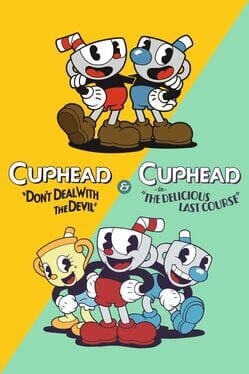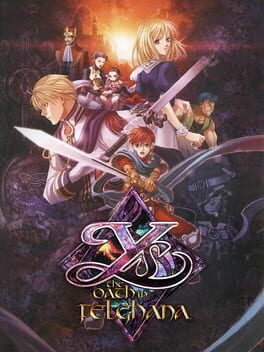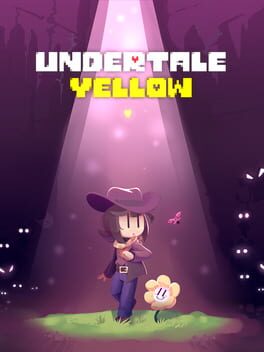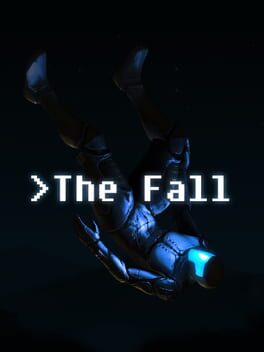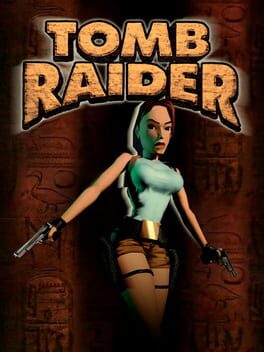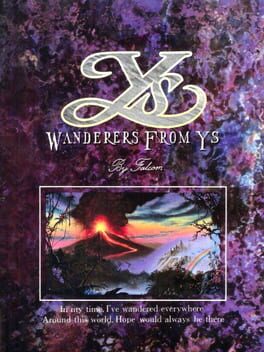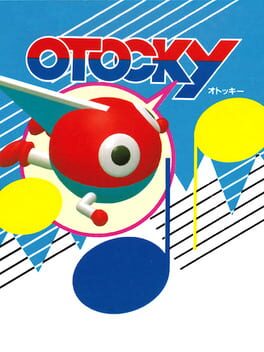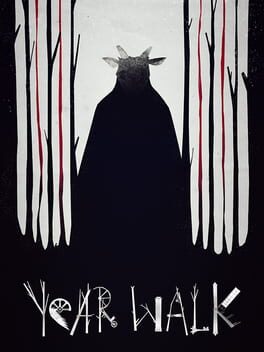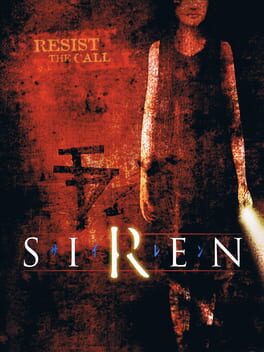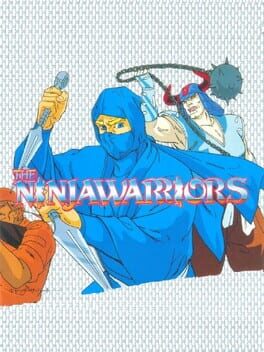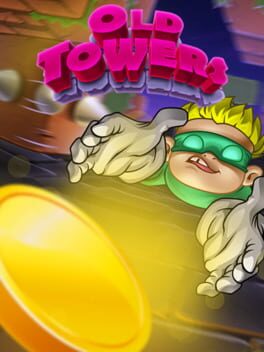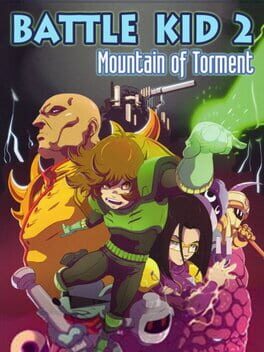Blowing_Wind
Cute artstyle and inventive ideas... to a point. The old cartoon homage while derivative at moments (like the Tom & Jerry or the Brutus from Popeye inspired bosses) does bring some interesting ideas for the enemy design and sometimes some simple backstory and characterization in the attacks, and that's where the identity of the title really shines...
But as a piece in the videogame medium taking influence from a cinematographic art form, the countless references to classic run and gun and shoot em ups from which I can observe an inmense obsession to remember Treasure, Capcom and Konami games (and others) make me realize that as an experience it feels less willing to impress in a cinematographic and "narrative" way than those 80s and 90s titles.
Yeah, Grim Matchstick is better animated and has more complex attacks than the dragon from Megaman 2, but it's a sole boss fight dedicated to him, and as such losses the impact of the sudden memorable appearance it had at the end of a long level.
Yeah, the King Dice boss presents a nerve wrecking experience to beat at only three health points while presenting some memorable boss design. But Cuphead's hard as nails attitude while satistying to conquer sacrifices more variety to not be too much of a marathon in its three health points. Variety compared to what? To the Dice Maze level from Gunstar Heroes of course, from which one of the bosses found here also makes a reference to the "Melon Bread" enemy found in that level.
In the D(elicious)L(ast)C(ourse) there's a boss fight reminiscent of one of the alternative second stage minibosses of Contra the Hard Corps. There's no urgency in beating the boss other than getting rid of the dogs on airplanes as quick as possible to finish it and not slip up, while Contra had you battle it in a rush to reach an abandoned facility that continued the remaining of the level, an exhilarating experience one after the other.
My main problem with the title and the reason I consider it an involution to older games is its status as a glorified boss rush. Oh wait, Alien Soldier already was a boss rush, but there was connective tissue between them in the form of short level sections that set them up.
Yes, you can buy weapons outside of levels in the map (in a Wonder Boy-esque pig shop, wait, a Westone reference as well?) but the true content of the game being these boss fights while relegating actual platforming levels as a side glance just doesn't impress me, and the less it does as it continues to reference Gunstar Heroes green chaser shots, Truxton (oh Toaplan too?) bombs, Contra barricades, a cat-like machine in the background that attacks with its paws from either side of the screen (Clockwork Tortoise's Batman & Robin? Wow that's obscure), Dragon Quest slimes (ok, this is getting out of hand) and a Devil that feels like Lucifer from Ghouls and Ghosts in its first fase just to nod at gamers who played those things instead of coming up with something that overcomes them into an exciting presentation. The closest the game comes to this is in the eerie small introduction of the last boss in the DLC, setting up the reveal of the villain. Oh... It's superfluous you say? Well, just do as they did here and as long as you beat the section stablish a checkpoint for the boss if it's too tiresome to play a whole level and one of these challenging bosses.
So yeah, it's a decent cartoon, but as a game I'm not impressed by the spectacle and it wasn't as hard as I thought it would be (my brother had abandoned it and an irl friend said he tried playing it with a friend of his and also had to give up).
But as a piece in the videogame medium taking influence from a cinematographic art form, the countless references to classic run and gun and shoot em ups from which I can observe an inmense obsession to remember Treasure, Capcom and Konami games (and others) make me realize that as an experience it feels less willing to impress in a cinematographic and "narrative" way than those 80s and 90s titles.
Yeah, Grim Matchstick is better animated and has more complex attacks than the dragon from Megaman 2, but it's a sole boss fight dedicated to him, and as such losses the impact of the sudden memorable appearance it had at the end of a long level.
Yeah, the King Dice boss presents a nerve wrecking experience to beat at only three health points while presenting some memorable boss design. But Cuphead's hard as nails attitude while satistying to conquer sacrifices more variety to not be too much of a marathon in its three health points. Variety compared to what? To the Dice Maze level from Gunstar Heroes of course, from which one of the bosses found here also makes a reference to the "Melon Bread" enemy found in that level.
In the D(elicious)L(ast)C(ourse) there's a boss fight reminiscent of one of the alternative second stage minibosses of Contra the Hard Corps. There's no urgency in beating the boss other than getting rid of the dogs on airplanes as quick as possible to finish it and not slip up, while Contra had you battle it in a rush to reach an abandoned facility that continued the remaining of the level, an exhilarating experience one after the other.
My main problem with the title and the reason I consider it an involution to older games is its status as a glorified boss rush. Oh wait, Alien Soldier already was a boss rush, but there was connective tissue between them in the form of short level sections that set them up.
Yes, you can buy weapons outside of levels in the map (in a Wonder Boy-esque pig shop, wait, a Westone reference as well?) but the true content of the game being these boss fights while relegating actual platforming levels as a side glance just doesn't impress me, and the less it does as it continues to reference Gunstar Heroes green chaser shots, Truxton (oh Toaplan too?) bombs, Contra barricades, a cat-like machine in the background that attacks with its paws from either side of the screen (Clockwork Tortoise's Batman & Robin? Wow that's obscure), Dragon Quest slimes (ok, this is getting out of hand) and a Devil that feels like Lucifer from Ghouls and Ghosts in its first fase just to nod at gamers who played those things instead of coming up with something that overcomes them into an exciting presentation. The closest the game comes to this is in the eerie small introduction of the last boss in the DLC, setting up the reveal of the villain. Oh... It's superfluous you say? Well, just do as they did here and as long as you beat the section stablish a checkpoint for the boss if it's too tiresome to play a whole level and one of these challenging bosses.
So yeah, it's a decent cartoon, but as a game I'm not impressed by the spectacle and it wasn't as hard as I thought it would be (my brother had abandoned it and an irl friend said he tried playing it with a friend of his and also had to give up).
This review contains spoilers
My first beaten PSP game is the remake of the third Ys game, which I already said felt more personal due to taking place in the single town of the protagonist's friend. This PSP iteration delves a lot deeper in making you care about the town and its residents, often building up characterization and backstories that happened in the place, that lend a more organic feeling to the story of Chester and Elena. The best piece of rewriting in the game has to be that they made a random exposition NPC in Ys III be responsible in the massacre in the island the vengeful brother comes from, and being the one who adopted him and Elena when they were kids.
That said, the modernization makes a game that went fairly quickly (you could beat in two hours if you left the game running and grinding) take a lot longer and some things they want to detail or add end up feeling like a mixed bag. For instance they reveal a character who truly died in Ys III is actually alive near the end of here (which makes the dramatic investment in his grandmother's grieving feel cheap) or they just add some secondary escort missions that doesn't contribute to much other than letting you know about some very minor characters beforehand. The added detail that the demon that gets resurrected possesses the soldiers of the castle and it can't be reversed is a disturbing touch, but it takes responsability from the king and feels like a forced way to make him more empathetic for redemption, choosing like the original game, to do a not well foreshadowed plot twist with the character of a priest.
So overall the added fluff and the low budget feel of the presentation makes it come as very middle of the road, despite some fun gameplay to boast and the expansion of the Stoddart backstory.
That said, the modernization makes a game that went fairly quickly (you could beat in two hours if you left the game running and grinding) take a lot longer and some things they want to detail or add end up feeling like a mixed bag. For instance they reveal a character who truly died in Ys III is actually alive near the end of here (which makes the dramatic investment in his grandmother's grieving feel cheap) or they just add some secondary escort missions that doesn't contribute to much other than letting you know about some very minor characters beforehand. The added detail that the demon that gets resurrected possesses the soldiers of the castle and it can't be reversed is a disturbing touch, but it takes responsability from the king and feels like a forced way to make him more empathetic for redemption, choosing like the original game, to do a not well foreshadowed plot twist with the character of a priest.
So overall the added fluff and the low budget feel of the presentation makes it come as very middle of the road, despite some fun gameplay to boast and the expansion of the Stoddart backstory.
2023
(Finished the pacifist playthrough)
Undertale obviously borrows from the Mother series, but it's interesting to see this fan game tackle the theme of grief in more detail than Mother 3, where the game would do time skips and the player never sees how Lucas and his father try to recover from the loss of Claus and Hinawa (until it comes back at the final boss)
The reason I don't give this a higher rating is because Undertale Yellow can get a bit bland at times, especially on the western section, because it takes place in the same world as the base game and apart from different environments, there's not a lot of interesting lore to uncover and most of its emotional impact (the story of the secondary characters) is kept at the last fourth of the adventure. Compare that to how Mother 3 is constantly showing how the island evolves and how the citizens fall victim to industrialization, which gives you morbid curiosity through the whole playthrough to see what those once humble people turned into.
Undertale obviously borrows from the Mother series, but it's interesting to see this fan game tackle the theme of grief in more detail than Mother 3, where the game would do time skips and the player never sees how Lucas and his father try to recover from the loss of Claus and Hinawa (until it comes back at the final boss)
The reason I don't give this a higher rating is because Undertale Yellow can get a bit bland at times, especially on the western section, because it takes place in the same world as the base game and apart from different environments, there's not a lot of interesting lore to uncover and most of its emotional impact (the story of the secondary characters) is kept at the last fourth of the adventure. Compare that to how Mother 3 is constantly showing how the island evolves and how the citizens fall victim to industrialization, which gives you morbid curiosity through the whole playthrough to see what those once humble people turned into.
2014
Another game I started playing before I got a job and just now I'm finishing. Wasn't impressed two months ago by the story about trying to surpass the machine's own contradicting protocols nor the attempt to explore the value of machines compared to that of humans (since it degraded pretty fast in typical social commentary for these kind of things) but I did like the atmosphere that reminded me of 90s cinematic platformers and also the writing of the facility's AI, trying to talk normally while falling into the pitfalls of preprogrammed speech patterns, makes for an interesting characterization even if there's no more to it.
The game ends on a plot twist cliffhanger which doesn't add anything to the more interesting themes it was exploring apart from confirming what the other characters were telling the main AI, and I'm not playing through the sequel since this didn't hook me and I finished it just for the respect of its atmosphere
The game ends on a plot twist cliffhanger which doesn't add anything to the more interesting themes it was exploring apart from confirming what the other characters were telling the main AI, and I'm not playing through the sequel since this didn't hook me and I finished it just for the respect of its atmosphere
1996
Since I started playing this game three months ago, at the end the Lara Croft AI Youtube videos were a scam, a very interestingly laid out scam with very cool observations of the environmental storytelling that I didn't notice playing the game but which made me appreciate the little details Core Design sprinkled through the game to make it feel organic. The lack of level music and the sound design makes the adventure kick out some anxiety responses with the philosophy of 2D cinematic platformers translated into how the atmosphere is utilized (the developers seem to have experimented with this in the Commodore Amiga with the Rick Dangerous series beforehand but I haven't played them).
And not only that, it also can make for a nice adventure feeling. You can go around exploring, then find out an impressive area in the caves the game takes place in, you find out some incredible looking set-pieces and the musical cues do their magic
That said, the game is certainly aged, when I was referring to feeling like a cinematic platformer in atmosphere, I forgot to say it also feels that way in gameplay. The controls in platforming sections is mostly predictable and responsive, but the clunkiness can be evident in them and most prominent whenever you are fighting enemies. Trying to move around dodging those erratic patterns with tank controls isn't very fluid and can lead to a spastic camera whipping around uncontrollably and making your head ache, just as much as when you will get lost trying to find switches and openings in ceilings and floors because of the very pixelated graphics (this could be said to build into the sense of mystery but I don't think not noticing a lever because it blends into the rocks adds anything of value).
The story as well isn't anything amazing, Lara Croft is one-note as a character and the plot to find three mcguffins while fighting a woman that wants to do some genetic engineering is kind of underdeveloped. Apart from the atmosphere, the only other thing of artistic value is just finding details about the atlantean people and their downfall (the dinosaurs stored away at the incan ruins may sound bizarre at first but at the end you find out all the cultures you visited had some relationship to the atlanteans and their genetic engineering), and some of the puzzles involve references to mythologies to solve (like the Midas hand in the Greece levels). Beyond that, I got nothing more to say.
And not only that, it also can make for a nice adventure feeling. You can go around exploring, then find out an impressive area in the caves the game takes place in, you find out some incredible looking set-pieces and the musical cues do their magic
That said, the game is certainly aged, when I was referring to feeling like a cinematic platformer in atmosphere, I forgot to say it also feels that way in gameplay. The controls in platforming sections is mostly predictable and responsive, but the clunkiness can be evident in them and most prominent whenever you are fighting enemies. Trying to move around dodging those erratic patterns with tank controls isn't very fluid and can lead to a spastic camera whipping around uncontrollably and making your head ache, just as much as when you will get lost trying to find switches and openings in ceilings and floors because of the very pixelated graphics (this could be said to build into the sense of mystery but I don't think not noticing a lever because it blends into the rocks adds anything of value).
The story as well isn't anything amazing, Lara Croft is one-note as a character and the plot to find three mcguffins while fighting a woman that wants to do some genetic engineering is kind of underdeveloped. Apart from the atmosphere, the only other thing of artistic value is just finding details about the atlantean people and their downfall (the dinosaurs stored away at the incan ruins may sound bizarre at first but at the end you find out all the cultures you visited had some relationship to the atlanteans and their genetic engineering), and some of the puzzles involve references to mythologies to solve (like the Midas hand in the Greece levels). Beyond that, I got nothing more to say.
The combat gameplay is horribly executed in hit detection, but I have to say even if it's so clunky I can see something interesting coming out of it. Just like in turn based RPGs you are always going to take damage, it's interesting to see someone make an action sidescroller with the same mentality. Here it's just because it's poorly thought out and programmed at least in the SNES version, but if well pulled off it could be an interesting exercise for the player in resource management strategy knowing when to use your healing items since you know there is going to be mandatory damage
Otherwise it's a very simple sidescroller, probably the simplest RPG I have seen, but it's also quite short (just leave the controller taped so that you grind on enemies respawning for some hours then come back, it's no biggie) and the simple story benefits from that as well, there's nothing more to it than uncovering the past of one of the antagonists and his revenge against the kingdom you are at and I would have liked more things that made you attatched to the town of Redmont so that final goodbye would be more bittersweet. It may not be Link's Awakening in that regard, but again, it goes off without so much filler but the necessary to know the town's backstory so you care about it a little
Otherwise it's a very simple sidescroller, probably the simplest RPG I have seen, but it's also quite short (just leave the controller taped so that you grind on enemies respawning for some hours then come back, it's no biggie) and the simple story benefits from that as well, there's nothing more to it than uncovering the past of one of the antagonists and his revenge against the kingdom you are at and I would have liked more things that made you attatched to the town of Redmont so that final goodbye would be more bittersweet. It may not be Link's Awakening in that regard, but again, it goes off without so much filler but the necessary to know the town's backstory so you care about it a little
1989
Since I started playing this game I got a job, which coupled with a lot of exams, slowed down my time to play games. As a result I took two months to finish these two ones and I don't remember all the tiny details.
It's mostly the generic kind of fantasy story that would show up at that time. I think I overall prefer Ys I better because you are finding the relics of a long lost civilization and I like lore-hunting, though Ys II removes the mystery since it is set in that same civilization up in the sky, which, while in peril, wasn't so abandoned as Ys I would make you think. Ys II has a fun to use magic spell where you can turn into a goon and talk with other enemies to know the whereabouts and clues to puzzles, but otherwise becomes more predictable than Ys I.
People tend to complain about the "bumper car" gameplay of these early Ys games, though my problem at least in these two is that roughly the last third of the game takes place in the same monotonous-looking location, a thirty-floor tower in Ys I and a giant fortress in Ys II, which makes you backtrack all the time and hurts the pacing of the adventure.
Nice soundtrack though
https://youtu.be/ZSJeWCz2cXo?si=priq7rCyHSP-gJvx
https://youtu.be/mCugddr9Tug?si=saKcVVZlpp9zT0Io (this one at 0:54 is god-tier)
https://youtu.be/G-xLS7W5vNY?si=MX9CpGZqJfN_lfud
https://youtu.be/mKW3mJfM3qY?si=OhR9MgqnlnEVOCyo
https://youtu.be/82FQuVh-XGE?si=PohjA84ciwgAJikg
It's mostly the generic kind of fantasy story that would show up at that time. I think I overall prefer Ys I better because you are finding the relics of a long lost civilization and I like lore-hunting, though Ys II removes the mystery since it is set in that same civilization up in the sky, which, while in peril, wasn't so abandoned as Ys I would make you think. Ys II has a fun to use magic spell where you can turn into a goon and talk with other enemies to know the whereabouts and clues to puzzles, but otherwise becomes more predictable than Ys I.
People tend to complain about the "bumper car" gameplay of these early Ys games, though my problem at least in these two is that roughly the last third of the game takes place in the same monotonous-looking location, a thirty-floor tower in Ys I and a giant fortress in Ys II, which makes you backtrack all the time and hurts the pacing of the adventure.
Nice soundtrack though
https://youtu.be/ZSJeWCz2cXo?si=priq7rCyHSP-gJvx
https://youtu.be/mCugddr9Tug?si=saKcVVZlpp9zT0Io (this one at 0:54 is god-tier)
https://youtu.be/G-xLS7W5vNY?si=MX9CpGZqJfN_lfud
https://youtu.be/mKW3mJfM3qY?si=OhR9MgqnlnEVOCyo
https://youtu.be/82FQuVh-XGE?si=PohjA84ciwgAJikg
1996
I started playing this for this first time because I found this interesting video series with an AI impersonating Lara Croft and making comments while playing the game, and I want to know how it pulls it off with the proper context
https://youtube.com/playlist?list=PLbl4OiD1QF7LGnbfR9SRfSJ70FUzosBUZ&si=s2vfp8RZKox7DB_-
https://youtube.com/playlist?list=PLbl4OiD1QF7LGnbfR9SRfSJ70FUzosBUZ&si=s2vfp8RZKox7DB_-
1987
A novel idea to complete a catchy melody via your own projectiles but as the notes that are produced can't be used by the player when he wants, unless it's done sticking to a rythm, the music that ends up as the final product of the set rythm and the input of the "player-artist" are technically random noises that are not able to consistently be replicated to make music that can be used to communicate something.
This is just nice sounding noises, though I commend the programmers to be able to make them at least sound nice in the first place even for players with the worst sense of rythm of the world, and it's very amusing to hear those noises despite the fact you are trying to dodge a lot of things on screen that forces you to be pragmatic instead of artistic... Despite the fact you can only shoot in rythm.
Yeah... I don't think it's that good of an idea as everyone claims it is despite the originality. Just play well to unlock the level beats in the music maker mode because there's not a lot of value in the shooter half of the experience
This is just nice sounding noises, though I commend the programmers to be able to make them at least sound nice in the first place even for players with the worst sense of rythm of the world, and it's very amusing to hear those noises despite the fact you are trying to dodge a lot of things on screen that forces you to be pragmatic instead of artistic... Despite the fact you can only shoot in rythm.
Yeah... I don't think it's that good of an idea as everyone claims it is despite the originality. Just play well to unlock the level beats in the music maker mode because there's not a lot of value in the shooter half of the experience
2013
This review contains spoilers
It's got a lot of interesting folklore and it looks very nice with the use of parallax scrolling and that limited color pallete, but the game doesn't have faith in its own puzzles and has a hint system that doesn't cost anything because of how obtuse some of the solutions are (there's an arbitrary fourth wall break regarding something physical that shows up in the in-game encyclopedia for example. I don't understand how that thematically ties into the fact that what appears there was victim of infanticide). There's not any depht in it, the folkloric aspect ends up feeling like a touristic presentation, and the horror sometimes uses jumpscares at random...
Or that is what the game wants to you think. Oddly, once you finish its very ethereal plot-twist ending where your girlfriend appears dead apparently by you, it gives you clues for an alternate option which involves finding a way to log into a computer and you find out that instead of someone searching for the folklore you were actually playing as someone in the past that is warned by someone in our present to commit suicide so as to not have a psychotic breakdown later, and all the details of the protagonist's story are revealed to the player. I don't know how the protagonist being from the 1800s knew how to use the computer but ok.
It's a bit weird to rate. On the one hand, it averts the time travelling cliché of the protagonist getting what he wants with no consequence since it involves his own sacrifice, which is a bit hard to come by in these types of story
However, on the other hand it locks the interesting details of the main character's psyche and his current situation after you complete the story, which means you are normally just playing a regular point and click adventure only focused on gameplay and atmosphere (which can be quite botched as I mentioned above) and then dumps everything on you from the point of view of someone you never meet and with elements you didn't investigate by yourself. It would be like if in the PS2 horror game "Siren" you could only access the archives that explains the story after you reach the fake ending and if it wasn't you in organic contact with the environment that allowed you to gather the clues but some random hundreds of notes that show up from nowhere.
There is a game for DOS called "Bioforge" that did something similar to this, where you find an "encyclopedia" in a computer to understand the environment and who lets you know all the details of who you are at the end since you have amnesia. But in there you have to do moral choices which are interestingly what you end up comparing to your real backstory and makes you actually feel like you became a changed man, so it ties into the themes of fighting against the remnants of a religious organization. Here in Year Walk you are interacting with spirits and all of a sudden it turns out you will be a murderer.
It's a very strange and unnatural structural decision which would have made me drop the title by lack of interest if it wasn't because I was playing it by the recommendation of a friend. Thanks Felipe by the way, it was an interesting experience even if I am not too convinced by the whole work
Or that is what the game wants to you think. Oddly, once you finish its very ethereal plot-twist ending where your girlfriend appears dead apparently by you, it gives you clues for an alternate option which involves finding a way to log into a computer and you find out that instead of someone searching for the folklore you were actually playing as someone in the past that is warned by someone in our present to commit suicide so as to not have a psychotic breakdown later, and all the details of the protagonist's story are revealed to the player. I don't know how the protagonist being from the 1800s knew how to use the computer but ok.
It's a bit weird to rate. On the one hand, it averts the time travelling cliché of the protagonist getting what he wants with no consequence since it involves his own sacrifice, which is a bit hard to come by in these types of story
However, on the other hand it locks the interesting details of the main character's psyche and his current situation after you complete the story, which means you are normally just playing a regular point and click adventure only focused on gameplay and atmosphere (which can be quite botched as I mentioned above) and then dumps everything on you from the point of view of someone you never meet and with elements you didn't investigate by yourself. It would be like if in the PS2 horror game "Siren" you could only access the archives that explains the story after you reach the fake ending and if it wasn't you in organic contact with the environment that allowed you to gather the clues but some random hundreds of notes that show up from nowhere.
There is a game for DOS called "Bioforge" that did something similar to this, where you find an "encyclopedia" in a computer to understand the environment and who lets you know all the details of who you are at the end since you have amnesia. But in there you have to do moral choices which are interestingly what you end up comparing to your real backstory and makes you actually feel like you became a changed man, so it ties into the themes of fighting against the remnants of a religious organization. Here in Year Walk you are interacting with spirits and all of a sudden it turns out you will be a murderer.
It's a very strange and unnatural structural decision which would have made me drop the title by lack of interest if it wasn't because I was playing it by the recommendation of a friend. Thanks Felipe by the way, it was an interesting experience even if I am not too convinced by the whole work
2003
The kind of experimental game high budget companies would only attempt in the late 90s to early 2000s. The title is arranged like a file investigation regarding the whereabouts of more than 15 characters over the span of three days, 10 of which you control through the adventure. Most of them are characterized with enough thematic depht to make them memorable, even if there's not a lot of development and most of their backstory is found out via background elements (the TV reporter who became older and lost her job, the medic who became emotionally distant to his brother because of growing up in another family, the anthropology teacher who lost his parents on a landslide when he was a kid...), which is what makes the game so compelling to play, to discover the story of this village.
The thing is that what one character does at his point of the story has repercussions for someone else, and this means that for the true ending, there's a lot of cryptic things these characters (because the player saw later events and replayed the earlier levels) have to do which would require having telekhinesis to know it's needed to be done and amidst all the horrific things happening no one in their right mind would do (like going to open the bathroom of a hospital on another floor despite not having anything to do there just for another character the one you are controlling doesn't even know for that one to enter it later) or if it could have been done because out of curiosity (like grabbing a cassette) it ends up being a convenient solution for another character (fighting the character that grabbed it means you can grab what she was carrying and using the cassette's tape as a string to pull down something to distract an enemy). It becomes quite ridiculous but given the fact the game takes place in another dimension between earth and hell, there's a level of macabre surrealism at work with things lining up perfectly for everyone or else everything goes wrong, even if it's still kind of contrived.
And yes, the atmosphere is excellent. No wonder this is the same director as Silent Hill 1. It's still kind of clunky in terms of current moment dialogue (not helped by the weird delivery in the english dub and the british accents) but there's so much attention to detail in how it builds up the lore that it ends up being very fascinating.
Thanks Gsar for recommending the game. The sightjacking mechanic that lets you see what your enemy is seeing and how inventively it's used here left this piece of crap obsolete
The thing is that what one character does at his point of the story has repercussions for someone else, and this means that for the true ending, there's a lot of cryptic things these characters (because the player saw later events and replayed the earlier levels) have to do which would require having telekhinesis to know it's needed to be done and amidst all the horrific things happening no one in their right mind would do (like going to open the bathroom of a hospital on another floor despite not having anything to do there just for another character the one you are controlling doesn't even know for that one to enter it later) or if it could have been done because out of curiosity (like grabbing a cassette) it ends up being a convenient solution for another character (fighting the character that grabbed it means you can grab what she was carrying and using the cassette's tape as a string to pull down something to distract an enemy). It becomes quite ridiculous but given the fact the game takes place in another dimension between earth and hell, there's a level of macabre surrealism at work with things lining up perfectly for everyone or else everything goes wrong, even if it's still kind of contrived.
And yes, the atmosphere is excellent. No wonder this is the same director as Silent Hill 1. It's still kind of clunky in terms of current moment dialogue (not helped by the weird delivery in the english dub and the british accents) but there's so much attention to detail in how it builds up the lore that it ends up being very fascinating.
Thanks Gsar for recommending the game. The sightjacking mechanic that lets you see what your enemy is seeing and how inventively it's used here left this piece of crap obsolete
2015
"Frisk. Why would you ever climb a mountain like that? Was it foolishness? Was it fate? Or was it... Because you...? Well... Only you know the answer, don't you...?
I know why Seba climbed the mountain. It wasn't for a very happy reason. Frisk. I'll be honest with you. Seba hated humanity. Why he did, he never talked about it. But he felt very strongly about that. [...] In the future, if you see me... Don't think of it as me, OK? I just want you to remember me like this. Someone that was your friend for a little while. Oh, and Frisk... Be careful in the outside world, OK? Despite what everyone thinks, it's not as nice as it is here. There are a lot of Floweys out there. And not everything can be resolved by just being nice.
Frisk... Don't kill, and don't be killed, alright?
That's the best you can strive for."
I know why Seba climbed the mountain. It wasn't for a very happy reason. Frisk. I'll be honest with you. Seba hated humanity. Why he did, he never talked about it. But he felt very strongly about that. [...] In the future, if you see me... Don't think of it as me, OK? I just want you to remember me like this. Someone that was your friend for a little while. Oh, and Frisk... Be careful in the outside world, OK? Despite what everyone thinks, it's not as nice as it is here. There are a lot of Floweys out there. And not everything can be resolved by just being nice.
Frisk... Don't kill, and don't be killed, alright?
That's the best you can strive for."
1988
This review contains spoilers
I know it's an unconventional ending for the time to have the robots protagonists blow themselves up to destroy the White House and stop the dictatorship, but couldn't you have done it as soon as you entered it instead of making me struggle through that last level? 🤣
This is an extremely repetitive game, but this and Darius in the Arcades did to gaming what Abel Gance did to cinemas in the last half hour of Napoleon, the usage of three screens to make for a very large field of view (kind of like the Cinerama of gaming). When brought to home consoles however, the playfield is now letterboxed and quite small, so the constantly respawning enemies crowd the screen quite quickly. Great soundtrack though
This is an extremely repetitive game, but this and Darius in the Arcades did to gaming what Abel Gance did to cinemas in the last half hour of Napoleon, the usage of three screens to make for a very large field of view (kind of like the Cinerama of gaming). When brought to home consoles however, the playfield is now letterboxed and quite small, so the constantly respawning enemies crowd the screen quite quickly. Great soundtrack though
2019
Please someone tell me I'm not the only deranged person who plays a Sega Genesis puzzle game released in the 2020s and his mind turns to Yorgos fucking Lanthimos
"Your inventory has been lost. Oh, come on, you saw it coming!"
Yeah, repeating the formula doesn't excuse lack of subverting expectations or lack of innovation. Sadly it seems they didn't only copy the look and movement from Megaman. The villains are more generic this time compared to version 2 of the first game, released after this second title
Yeah, repeating the formula doesn't excuse lack of subverting expectations or lack of innovation. Sadly it seems they didn't only copy the look and movement from Megaman. The villains are more generic this time compared to version 2 of the first game, released after this second title
